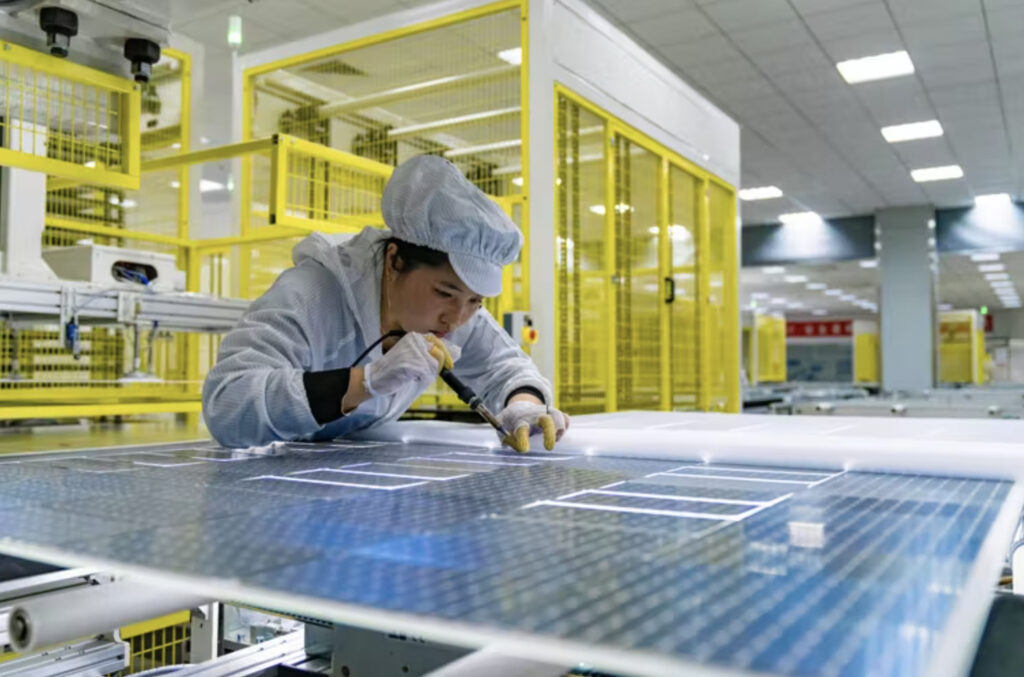As COP30 kicks off in Belem, Brazil, the focus of the climate debate is on pledges and targets. The real shift, however, is already visible in global markets.
The center of the clean energy transition is now in China – and that reality is shaping pricing, trade and investment strategies worldwide.
China has turned climate ambition into industrial strategy. It leads almost every segment of the clean-energy economy, from solar and wind to batteries, electric vehicles and grid technology. Its decisions now influence global cost structures, supply chains and market expectations.
By the end of 2024, China had already surpassed its 2030 target for installed wind and solar capacity, reaching about 1,400 gigawatts, according to the National Energy Administration. This year, renewable capacity has overtaken fossil fuel power for the first time.
The International Energy Agency projects that China will account for nearly 60% of all new global renewable power capacity installed through 2030.
This expansion has changed the economics of energy. Industrial scale has driven down the cost of solar modules, wind turbines and batteries to levels that make clean power competitive without subsidies in most regions.
China now controls more than 80% of the world’s solar manufacturing supply chain and dominates production of electric vehicles and storage batteries. These developments are reshaping the global cost base.
Every investor portfolio exposed to energy, infrastructure or commodities now reacts to how China prices and deploys clean technology. From corporate margins to trade balances, the deflation created by Chinese production capacity is influencing valuations and forecasts across continents.
Equity markets are adjusting to the new energy reality. Inside China, overcapacity in solar manufacturing has led to fierce price competition. China’s six largest solar producers reported combined losses of about $2.6 billion in the first half of 2025. The weakest will likely disappear, leaving stronger, better-capitalized firms with greater global reach.
Outside China, the ripple effect is supporting suppliers of copper, lithium, nickel and rare earths, as well as grid operators and logistics companies serving new energy infrastructure.
Credit markets are evolving in parallel. Green and transition bonds linked to Chinese exports are multiplying. Emerging market issuers are financing renewable projects built with Chinese technology, creating a new layer of investable debt and strengthening balance sheets tied to the energy transition. Capital is flowing toward the infrastructure that underpins electrification, storage and transmission.
Private equity and infrastructure funds are positioning accordingly. Belt and Road energy projects that once relied on coal now focus on solar and wind. Regional developers are securing Chinese components to meet domestic decarbonization targets. Clean power is shifting from a cost to a growth engine across multiple regions.
Still, there are limits. China’s grid still struggles to absorb the rapid expansion in renewable generation, some provinces face curtailment and local debt constraints slow new approvals. Coal remains an important stabilizer of power sources. Yet the percentage of clean power generation continues to rise, and policy direction remains consistent and focused.
The investment implications are ever clearer. China’s dominance has made clean energy the world’s most powerful source of cost deflation in real assets. It’s driving new cycles of industrial demand, commodity use and infrastructure spending.
Exposure to this transformation can take many forms, including listed renewables, metals critical to electrification, utilities integrating advanced storage and the financing structures that link these sectors.
Many governments view China’s rise primarily through a political lens. Markets, however, view it through a structural one.
Industrial ecosystems of this scale cannot be duplicated quickly. They represent decades of accumulated capital and experience, and any attempt to isolate or replace them risks higher costs and slower progress elsewhere.
Energy security, competitiveness and productivity will increasingly depend on access to China’s clean energy ecosystem. Treating clean energy as national infrastructure has created industries, jobs and export leadership. Economies that hesitate to match this approach will lose both growth and influence in the decades ahead.
The clean energy transition is no longer an aspiration. It’s a functioning global market with China at its core. The combination of tech, capital and industrial discipline emerging from Beijing, Shanghai and Shenzhen is setting the direction of economic opportunity across Asia, the Middle East and Africa.
Ignoring this shift won’t shield capital from its consequences. It would only mean missing one of the defining sources of likely sustainable return in the contemporary global economy.

